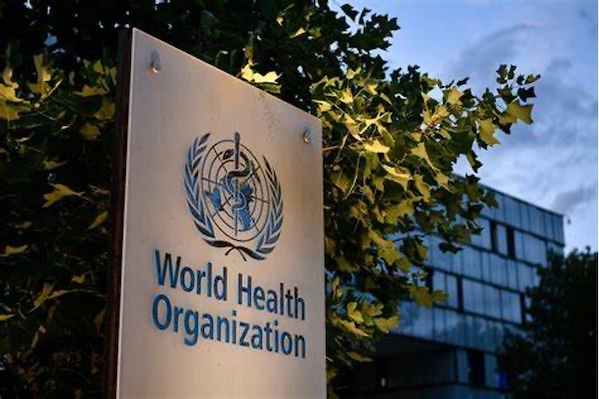WHO calls on governments for urgent action to invest in Universal Health Coverage
December 13, 2023
Source: drugdu
 247
247

The World Health Organization (WHO) has published the 2023 global health expenditure report, which sheds new light on the evolution of global health spending at the height of the COVID-19 pandemic.
Released ahead of Universal Health Coverage (UHC) Day, the report reveals that in 2021 global spending on health reached a new high of US$ 9.8 trillion or 10.3% of global gross domestic product (GDP). Nevertheless, the distribution of spending remained grossly unequal. Public spending on health had increased across the world, except in low-income countries where government health spending decreased and external health aid played an essential supporting role.
In 2021, about 11% of the world's population lived in countries that spent less than US$ 50 per person per year, while the average per capita spending on health was around US$ 4 000 in high-income countries. Low-income countries accounted for only 0.24% of global health expenditure, despite having an 8% share of the world’s population.
Investments in health need to continue
The record spending on health in 2021 demonstrated how countries prioritized public health during the pandemic even as economies and societies reeled from the massive disruptions it caused. However, the report also highlights that the scale of growth in public spending on health observed during this period is unlikely to be sustained, as countries shift focus to handle other economic priorities such as slowing growth, high inflation rates and increased debt servicing obligations associated with rising indebtedness.
“Sustained public financing on health is urgently needed to progress towards universal health coverage. It is especially critical at this time when the world is confronted by the climate crisis, conflicts and other complex emergencies. People’s health and well-being need to be protected by resilient health systems that can also withstand these shocks,” said Dr Bruce Aylward, WHO Assistant Director-General, Universal Health Coverage, Life Course.
Data on health service providers
The 2023 global health expenditure report also draws on disaggregated spending data by health service providers from 50 countries. Spending at hospitals, ambulatory care providers and pharmacies accounted for most health spending across all income groups (65%-84%). While spending by all types of health service providers increased in most countries, more rapid growth was seen in spending by preventive care providers than other types of providers.
During the pandemic, countries also adjusted their service delivery mechanisms to adapt to the new demands of battling COVID-19 while sustaining essential services. For example, the report shows that more high-income countries started to utilize pharmacies to deliver preventive care services since the pandemic.
Health capital investments increased
A new and important aspect of this year’s global health expenditure report is the insights into health capital investments, which is essential to the functioning of health systems, now and into the future.
In contrast to current health spending, which reflects the day-to-day consumption of resources, capital investments create new assets, such as buildings and equipment.
Capital investments increased in all income groups during the pandemic: 40-50% in low- and lower-middle income countries, and 8-9% in upper-middle and high-income countries. In low-income countries, there was a surge in machinery and equipment spending, possibly influenced by the lack of essential equipment, such as ventilators and hospital beds, at the beginning of the pandemic. Hospitals received over half of all reported investments in all income groups. Government spending was also a major driver of the rise in health capital investment. The exception, once again, was low-income countries, where government and external health aid played a critical complementary role in bolstering investment.
Improved data collection and data use
WHO publishes new data on health spending every year. The global health expenditure database (GHED) is regarded as a global public good. It provides strategic information for policy-development, national planning, and monitoring, while also enhancing the transparency and accountability of governments to their citizens with respect to the use of public funds on health. The GHED provides comprehensive information on total health spending, spending by source, and health financing arrangements for over 190 countries, with data tracing back to the year 2000.
In recent years, the database has been expanded to include spending categorized by health care functions, including spending on primary health care (PHC) in approximately 100 countries. Furthermore, data on health expenditure by disease is also available for a set of countries, primarily in low- and middle-income countries. This year, for the first time, WHO also released health expenditure data by health care provider. This aims to help facilitate better understanding of current resource flows and to help shape future investments in health based on a PHC approach.
The report calls for actions to improve data quality, data availability and timeliness. Key to this is the general institutionalization of health accounts practices, in line with the global standard for the System of Health Accounts framework at the country level.
https://www.who.int/news/item/11-12-2023-who-calls-on-governments-for-urgent-action-to-invest-in-universal-health-coverage
Read more on
- Multiple batches of quadrivalent influenza virus split vaccine have been sub-packaged and submitted for lot release approval; expected to be released to the market soon after approval December 12, 2025
- Ab&B Bio-Tech CO., LTD. JS Lyophilized Human Rabies Vaccine Initiates Phase III Clinical Trials December 12, 2025
- The ‘Sweetest’ HPV Vaccine Market is Gone | Haibin Interview December 12, 2025
- InnoCare Pharma announced that its first independently developed next-generation TRK inhibitor, zoletrazinib, has been approved for marketing in China December 12, 2025
- Is PD-1/VEGF dual antibody + ADC becoming the standard configuration? December 12, 2025
your submission has already been received.
OK
Subscribe
Please enter a valid Email address!
Submit
The most relevant industry news & insight will be sent to you every two weeks.



